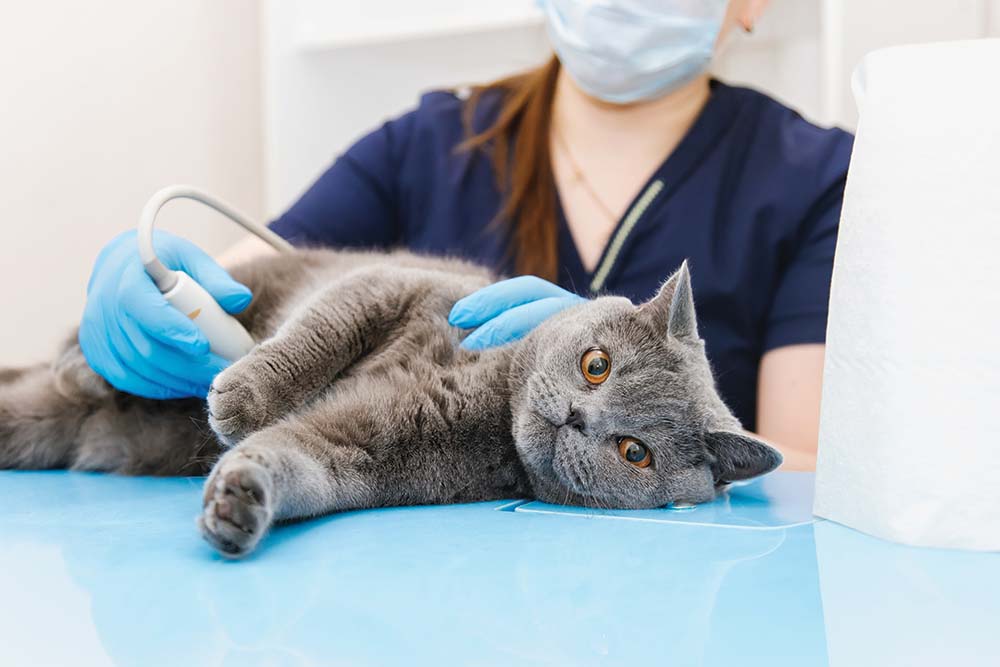20 Mar 2023
The basic science of veterinary care may evolve relatively slowly, but the technology underpinning its delivery continues to advance at a relentless pace. Oli Viner looks at some of the latest developments and how they can enhance practice performance…

Image © Siarhei / Adobe Stock

One of the greatest challenges a veterinary team faces is siloing of information.
Not having visibility to all the interactions with pet owners can be frustrating for all involved. It’s all well and good bringing in new and shiny tech to your practice, but if it is not easily accessible, then this can end up being a net-negative. New systems and processes need engagement from team members, as well as good integration with your existing tech.
If technology acts as the central nervous system of the practice, then the PMS is the brain. While in reality, it might not be the “smartest” piece of tech in your ecosystem, it is the central source of truth and what anything else should ideally connect in to. Disconnected pieces of software can be as useful as a limb that has had a neurectomy.
A quick tech explainer first – an application programming interface, or API, in simple terms is a bit of software that allows other bits of software to talk to it and exchange data. It is common outside of the vet sector for most large-scale software to have open APIs. An open API is one that is freely documented, and available for anyone to integrate with and build on top of. This turns your software into a “platform”.
Broadly speaking, PMS companies have taken a few different approaches in our sector. Some fully embrace the idea of the PMS as a platform and have wonderful open APIs. They may charge for these, and they may vary in quality, but the philosophy is what is important here. Companies like Covetrus, MWI and Provet have broad APIs that allow for good and simple integration. This list is not exhaustive, and some of the smaller players, such as Teleos and VetIT, will offer “bespoke” integrations rather than a general API, but are philosophically open to the idea of integrating. Other PMS companies talk a lot about integration, but are not really open – they shall remain nameless – instead operating a fairly walled garden approach to access, often because they are concerned about losing revenue in areas that other tech operators may disrupt.
As someone involved with a vet tech startup, I can tell you that innovation will be offered first to clinics using PMS systems that embrace innovation and have an open API.
A future article will cover PMS systems, but it is worth saying some more modern PMSs are emerging (such as Digitail and Rhapsody) that offer a broader first-party feature set with gorgeous interfaces, but that are not especially open for integration. They control and do not open access to key parts of the customer journey; however, their first-party solutions are often excellent, and broader and more consumer focused than traditional PMS systems.
As aforementioned, the PMS is the brain of your technology system and the core source of truth, but it isn’t always the “smartest” thing in your stack. A market has, thus, developed for tools that “supercharge” certain areas where the PMS companies have lagged behind.
Tools like this are often also a step towards a paperless system, where all your data entry and recording is done through software. On top of these efficiency gains, regulatory benefits can be seen, such as an audit trail, with digital records storage avoiding the need for boxes of paper under the reception desk – a big tick for sustainability.
A great example of workflow software is Plexi. Plexi is a workflow tool with a great user interface that acts as a digital whiteboard (such as SmartFlow), but with added features such as digital general anaesthesia sheets and internal messaging. It can also streamline workflows, bringing both operational efficiency, as well as reducing errors and missed charges.
Back in my days of clinical practice, I’d experience intense psychological discomfort seeing an animal export booked in. This is where OVForm comes in, simplifying this process, which not only speeds it up as it’s digital, but results in considerably fewer errors. Hopefully, far fewer dogs will be stranded on the wrong side of the Channel as clinics embrace this tool.
Clinical record keeping is an area that is also ripe for disruption. We all have that one colleague who thinks six acronyms stringed together without conjunctions counts as a good clinical history, so Talkatoo is trying to solve this by providing veterinary-specific dictation software that works anywhere with a keyboard input. However, potentially more interesting to me is Kiroku. These guys started in the dental world and have designed an interface to try to streamline input for clinical records by using templates, clicks and prompts. Its output gets copied and pasted into the PMS. I think this could be highly innovative, although the improvement of AI chat models, such as Chat-GPT3 (check it out if you haven’t already), may render this obsolete in the future.

Technological innovation often comes in cycles of leaps and then iteration. Intel famously used to develop its chips in a “tick tock” pattern (not to be confused with the social media platform), where it would innovate in a “tick”, then improve during a “tock” phase. A great example of this is what is going on currently with imaging. The “tick” was being able to capture good digital images in veterinary clinics and now we are seeing iterative improvements around how that data is used.
Butterfly is a handheld ultrasound probe that connects to your smartphone to allow you to do patient-side ultrasonography. As cool as this is in and of itself, it has also innovated in the area of telemedicine. It’s “TeleGuidance” system allows a video call to occur simultaneously with the scan, allowing a more experienced clinician to help a novice to scan and even change settings. It’s a long way from the screen of fuzzy grey dots and twisty knobs from my early days in practice.
Other telemedicine and teleradiology services offer various levels of human or AI interpretation on everything from plain old radiographs to CTs. This is an area that’s likely to keep expanding with really solid improvement in neural networks for AI interpretation. These sorts of systems usually only improve with time and broader data sets, so it’s an area to keep a close eye on.
3D printing is becoming progressively cheaper and more advanced every year, with huge strides being made. While right now this is a highly specialised area, it is not inconceivable to imagine a world in the not-too-distant future where imaging is performed, and 3D printed implants are simultaneously being created on site and on demand. Even printing whole organs is something on the horizon in human medicine and I’d expect a trickle down into our field over a longer timescale.

While a significant driver of tech adoption comes from the veterinary clinics themselves, there’s also consumer demand at ground level. Wearables for pets are a competitive battleground, with a number of companies now on their third or fourth generation of products. A historically significant limiting factor has been battery life, but strides are now being made in this area, so that no one needs to remember to plug their cat in every night.
The devices most commonly available fall into two categories – those that are simple activity or location devices, and those that make health claims. Focusing on the latter, a few of these have made bold assertions on clinical interpretation, although remain to make a considerable dent in the market.
Oggii is one I have been watching for a while, which claims to diagnose ear infections, atopy and other diseases, but it still does not seem readily available at any scale.
Whistle has been successful at a broad rollout, especially in the US, and it does have some health claims.
A significant obstacle, however, is PMS integration and communication with what the pet owner sees/is being advised from their app versus what the bricks and mortar clinic can easily manage.
Smart feeders potentially make the age-old problem of cat owners who refuse to accept they’re overfeeding a thing of the past, although, hopefully, a later version might come with some sort of remote electric product to prevent owners giving too many treats. At the other end, smart litter trays are now starting to become available, with Petivity being one of the most advanced. A big advantage here is you can also track the weight of cats who get on to it, as well as tracking urine and faecal amounts, and frequencies in a way that has traditionally proved very difficult.
One of the challenges here is a lot of these offer some sort of advice directly from their platform, potentially disintermediating the veterinary clinic. One also has to question how much the data from these devices is being harvested. As with Facebook or other social media platforms – if it’s free (or at least very cheap) – you’re probably the product.

We are definitely seeing a theme of data collection and AI enhancement, and these areas likely are going to grow exponentially over the next few years. Another theme is connectivity, and while collecting the data is wonderful, the need for the clinician to be aware of it and act on it is paramount. Added to that, being able to communicate back to the client is essential, so being able to use digital messaging tools such as WhatsApp to frictionlessly communicate asynchronously will be a big topic to cover in another article.
I don’t think any forward-looking tech article would be complete without discussing whether there’s an application here for blockchain.
As a huge advocate and blockchain developer myself, I may be biased, but one solution for the siloing of data that we discussed at the start is having a secure and decentralised store of patient data. Blockchain technology may be the solution here, removing the barriers for different applications to be able to communicate and store on one central record.
A patient can become tokenised (an NFT), with data stored in an encrypted, immutable and decentralised way. In this panacea, the PMS still has a significant orchestration function, albeit it is no longer the primary store of the clinical record.
Pet owners control their data as sovereign individuals and can grant access to/from any provider of choice, including their veterinarian. I look forward to describing this in a later article.